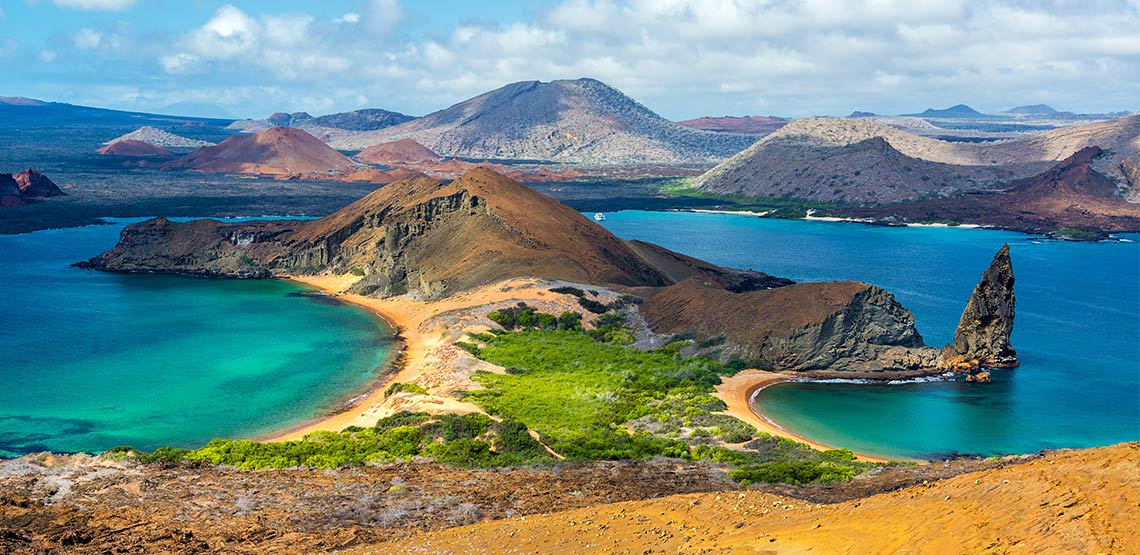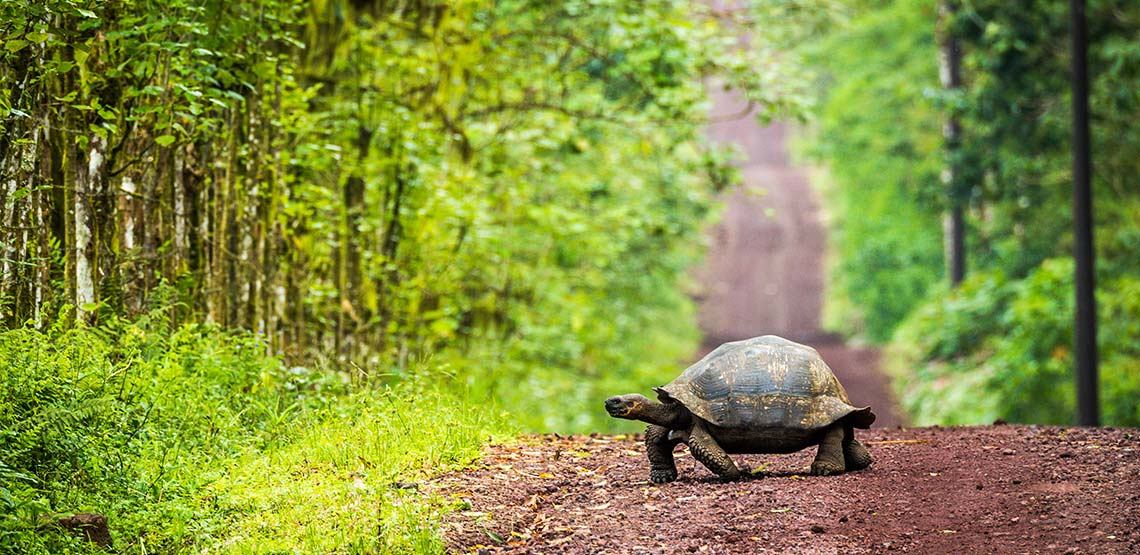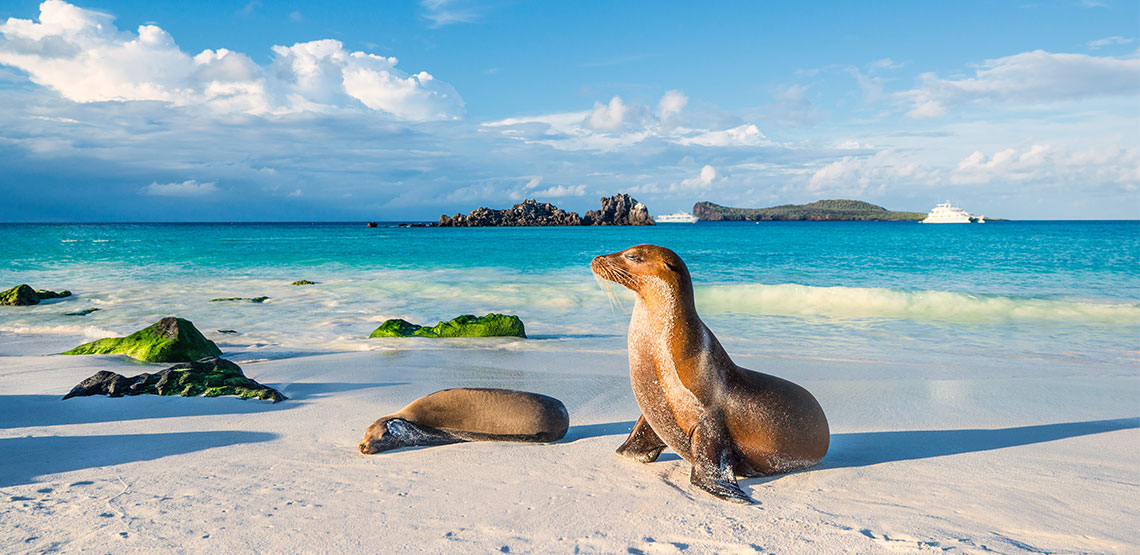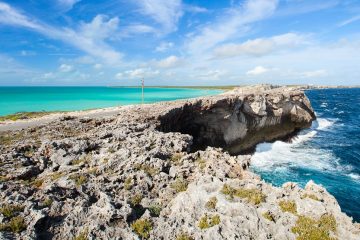Discover Natural Diversity Like Nowhere Else on Earth in the Galapagos Islands
Incredible Species and Unparalleled Wilderness
Located about 600 miles off the coast of mainland Ecuador, the Galapagos Islands are a gorgeous chain of about 13 separate volcanic islands in the Pacific Ocean. For decades, the archipelago has attracted tourists from all over the world, intrigued by the incredibly unique wildlife and carefully preserved wilderness.
It’s here that Charles Darwin came up with his theory of evolution, famously published in his book “On the Origin of Species.” Hundreds of insects, birds, reptiles and mammals coexist on the islands making it a prime destination for animal lovers and environmentalists alike.
So what do you need to know for your Galapagos Islands vacation?
Why Go
Much of the exploration of the Galapagos involves being out on the water for extended periods of time since chartered boats and guided cruises are pretty much the only way to get from island to island. As such, a visit here often provides a greater appreciation for the ocean and its creatures, which are also the biggest attraction.
The Galapagos Islands are home to endemic species, meaning that the islands are the only place in the world that they live. Probably the most famous of these species is the Galapagos tortoise, the largest and longest-living tortoise in the world.
You can also observe the only marine iguana species in existence as well as flightless cormorants, 13 species of finches, the tiny Galapagos penguin, and Galapagos fur seals among others.
In order to protect the precious wildlife that exists there, both the islands and the 270,000 square miles of ocean surrounding them, have been designated UNESCO World Heritage Sites since 1978 and 1984, respectively. As a result, the islands provide an up close and personal look at a practically untouched ecosystem where humans did not develop indigenously.
Many of the islands are still quite remote as only five have seen development for tourism’s sake.
When to Go
Choosing a time of year to visit the Galapagos Islands all depends on what you want to see and experience. In general, the weather remains beautiful and temperate year round since the islands are so close to the equator. Temperatures range from the mid-60s to high-80s whether winter or summer.
High season peaks from June to August when the northern hemisphere has its summer vacations. Along with December and January, these are the most expensive times to visit. To avoid crowds or booked up tours and cruises, it’s better to visit from January to May when it’s sunny and warm, with the occasional rain shower.
During these months, land mammals — and some species of birds — begin to nest. It’s also hatching season for the giant Galapagos tortoises.
June to December marks the region’s dry season, when marine animals are the most active. Whales, dolphins and sharks are more visible and sea lions are giving birth to their pups. Divers and snorkelers find that the latter half of the year is ideal for this reason.
For the best experience possible, consult with a local tour operator to find out when you can have the ideal wildlife experience based on your personal interests.
Land or Sea Based
Because the Galapagos Islands are a heavily protected ecological area, most places outside of the main tourist towns are only accessible with a licensed national park tour guide. There are, of course, certain things that are available just outside of populated areas, but it’s best to book with a tour company to navigate around the confusing travel logistics, especially for inter-island travel.
That being said, the majority of things to do center around either land-based day tours or multi-day cruises. Day tours tend to be cheaper, around $100 USD to $200 USD a day, but are arranged through a local hotel, which acts as your base of operation.
Cruises range from three-day excursions to two-week luxury experiences aboard a fancy yacht. Although cruises normally start at around $1,000 USD for shorter trips, they have the benefit of food and lodging included in the price.
The Sights, the Sounds, the Beer! Austria The birthplace of Mozart and the Von Trapp family, Austria has a rich and varied musical history. Vienna's Opera House...
Things to Do
Whether you choose to see the islands by land, sea, or both, there are tons of outdoor activities to keep you occupied.
Hiking
One of the most popular land-based activities, especially on Isabela, Santiago, and Santa Cruz islands, is hiking. You can walk along black lava shorelines at Puerto Egas, trek across Sierra Negra — the world’s second largest crater — or explore the lush highlands in Santa Cruz.
Stunning lava tunnels and tubes also provide an interesting underground look at the island’s geology and how it’s continuously shaped by seismic activity.
Water Sports
As with any island destination, water sports are popular activities among tourists, providing an intimate look at marine life. Probably the most popular things to do in the Galapagos are snorkeling and diving because of the opportunity to swim alongside sea turtles, sea lions, stingrays, penguins and even sharks.
Los Tuneles, off of Isabela Island, ranks as a top snorkeling and diving destination in the area for the immense density of underwater wildlife. You can also kayak and surf off the coast of the islands, but keep in mind, you’ll generally have to do so with an organized tour.
Animal Tours
Since most people come to the Galapagos for its wildlife, it’s no surprise that many cruises and tours provide prime viewing of the island’s animals. Depending on the tour itinerary, you may get to see the blue-footed boobies do their mating dance or watch marine iguanas swim and sun themselves on lava rocks.
Vilamil Lagoon, off of Isabela, has a high concentration of Galapagos species and is a must-do for anyone interested in observing local wildlife in their natural habitats.
Wildlife Centers
Multiple wildlife centers can be found among the islands, like the Giant Tortoise Breeding Center and Reserve on Isabela Island. Here you can learn about the conservation efforts in place to preserve this unique species of tortoise and possibly witness the birth of a baby tortoise.
Also noteworthy is the Charles Darwin Research Station and Institute, which catalogs plant life, invertebrates and vertebrates found in the area. Some facilities even offer voluntourism opportunities, allowing you to participate in conservation efforts or other kinds of environmental outreach.
What to Expect
Since there’s no direct access to the Galapagos Islands, you may need to stay in either Quito or Guayaquil (on the mainland) for at least one night before flying out. While most flights leave from Quito, they all stop in Guayaquil, so if you can stay there, you’ll save an extra 30 minutes to an hour in travel time.
Flights generally range from $420 USD to $600 USD depending on the season and will either fly into San Cristobal or Baltra. If you’ve booked a cruise or are staying at a luxury resort, more than likely your transfers to either the hotel or cruise ship will already be arranged.
If not, taxis are relatively cheap and will take you to one of the public ferry ports for inter-island travel.
In order to keep track of the number of visitors to the islands every year — as well as maintain conservation efforts and tourism — foreigners do have to pay a couple of fees upon arrival.
Before you can check in for your Galapagos flight, you’ll need to purchase a $10 USD Transit Control Card or TCC. It’s essentially a type of visa that must be presented with your passport. At the end of your trip, you’ll also have to surrender it before you depart.
Once you arrive at one of the Galapagos airports, there’s also a national park fee of $100 USD for adults, and $50 USD for children under 12, for accessing the islands.
Although the national park fee seems steep, everything else is super affordable no matter what your budget. Delicious seafood meals range from $3 USD for a quick bite to $35 USD for a fancy restaurant.
Youth hostels are under $40 USD a night and most mid-range hotels are around $120 USD per night or less. Overall, you can expect a lot of bang for your buck considering it’s one of the only places in the world where there’s no major predator, making many of the wildlife indifferent or unafraid of humans.
Where else can you stand next to a giant tortoise or do yoga next to a sea lion?









